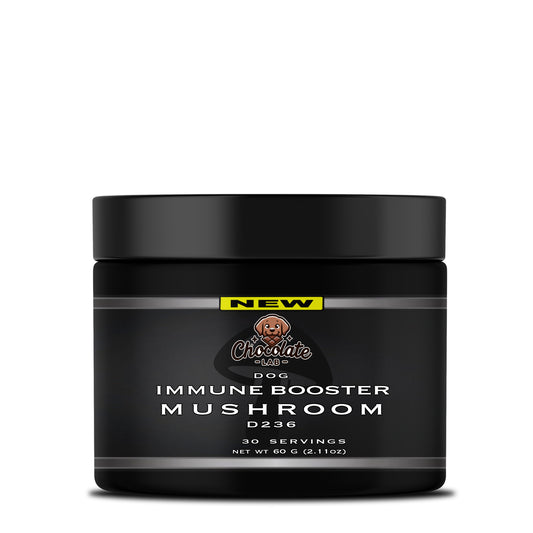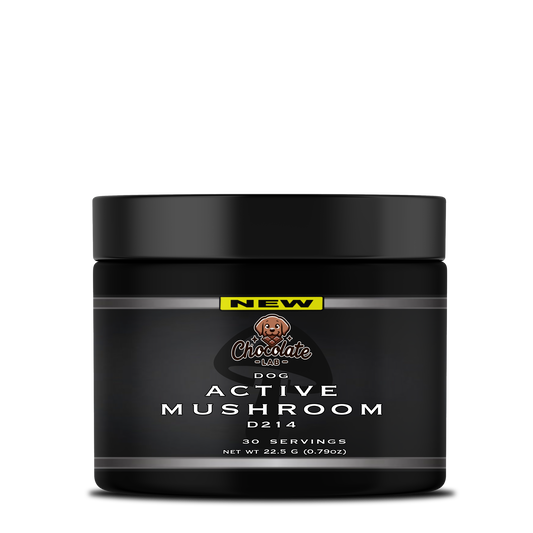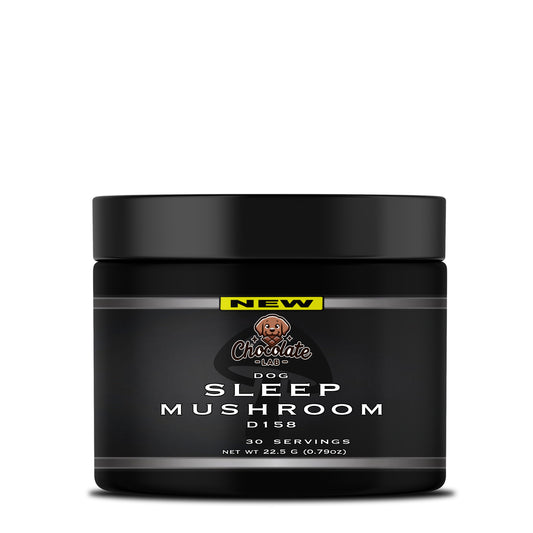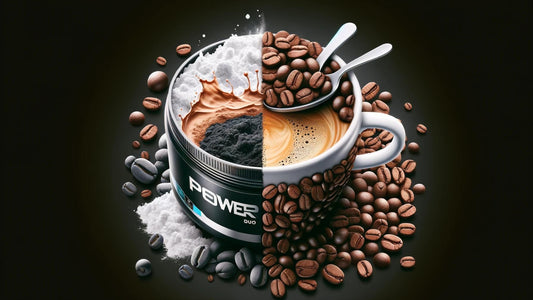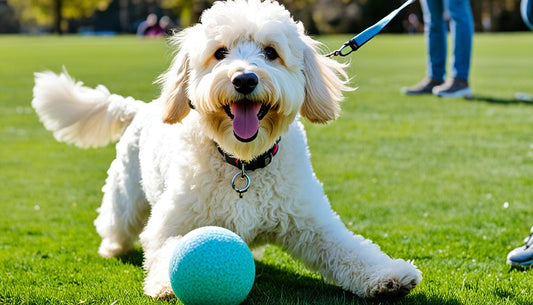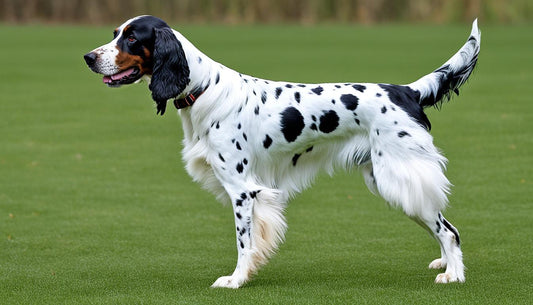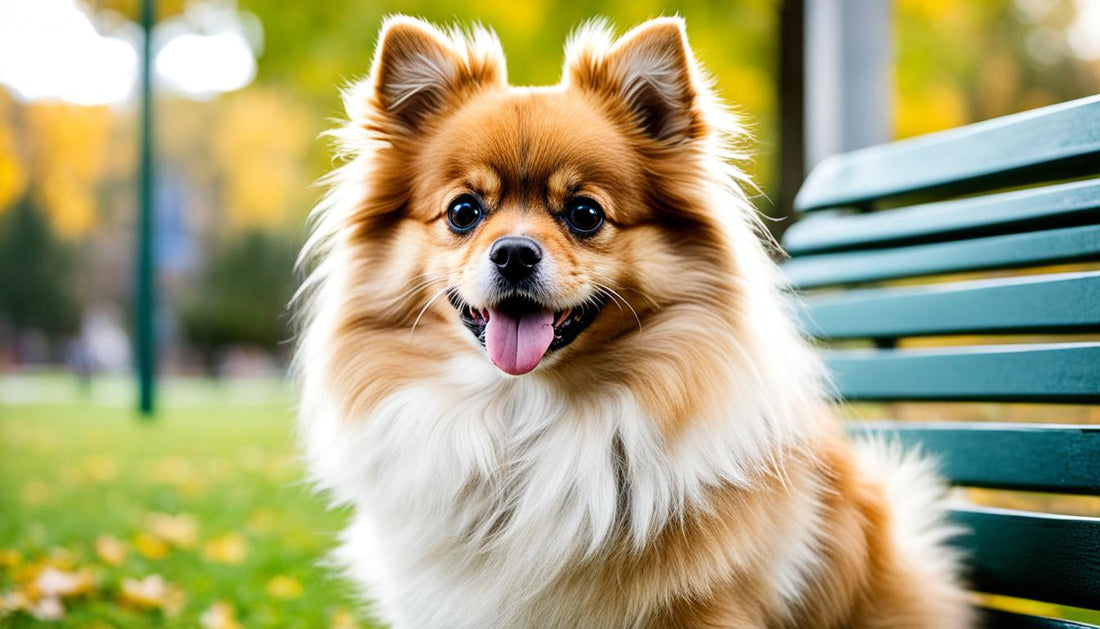
Merle Pomeranian: Dog Breed Information, Traits & Care Tips
Amidst the plethora of dog breeds, the merle Pomeranian stands out as a vibrant tapestry of color and personality. Are you curious to delve into the merle Pomeranian information that showcases this captivating breed? Often lauded for their charm and dynamism, these fluffy companions carry a distinct merle Pomeranian temperament that is as engaging as their unique fur patterns. But what specifically does it take to care for such a special canine member of your family? If you're envisioning life with one of these enchanting creatures, obtaining essential merle Pomeranian care tips is imperative to transform your home into a merle-welcoming haven.
Unlock the whimsical appeal of the merle Pomeranian, a variant of the traditional Pomeranian breed, treasured not just for its eye-catching looks but also for its spirited disposition. Immerse yourself in the rich tapestry of quirks and requirements that owning such an extraordinary pup entails. Let's embark on a learning journey that will guide you through the enchantment and responsibilities that accompany raising a merle Pomeranian.
Key Takeaways
- Understanding the lively and affectionate nature inherent in the merle Pomeranian temperament.
- Discovering unique merle Pomeranian information that aids in recognizing their distinct characteristics.
- Learning crucial merle Pomeranian care tips to maintain their health and vibrant merle coat.
- Identifying the need for early socialization and consistent training specific to merle Pomeranians.
- Gleaning insights into the health considerations that are vital when caring for a merle Pomeranian.
The Unique Appeal of the Merle Pomeranian

When one thinks of the Pomeranian breed, images of fluffy, vivacious pups come to mind. Yet, it's the merle Pomeranian that truly captures the imagination, thanks to its merle pomeranian colors and distinct merle pomeranian traits. This variant embodies an ethereal blend of beauty and rarity that enchants breed enthusiasts far and wide.
The merle pattern—an elusive swirl of colors—positions these Pomeranians in their own league of canine aristocracy. Unlike the traditional solid coloration, merle Pomeranians exhibit a mosaic of dark splotches against a lighter background, an arresting vision that mesmerizes on sight. Each merle Pomeranian is a unique work of art, ensuring that no two dogs are identical.
Let's delve deeper into the kaleidoscope of shades that characterize this breed:
- Blue Merle Pomeranians are a delightful rarity, with soft blue-toned patterns adorning their luxurious coats.
- Red Merle Pomeranians convey a sense of warmth, with copper and earthy tones creating an autumnal feel.
- Chocolate Merle Pomeranians are as decadent as they sound, boasting rich, deep chocolate colors swirled into their fur.
The rarity of these kaleidoscopic patterns incites a higher demand among prospective pet owners, raising the merle Pomeranian's desirability. It's not just about looks; their allure also lies in the mystery and singularity of their coat—a natural phenomenon that cannot be replicated with the wave of a brush.
To further illustrate the desirability of these canine treasures, consider the following comparison:
| Feature | Merle Pomeranian | Solid Color Pomeranian |
|---|---|---|
| Color Variation | High (Unique combination of patterns) | Low (Uniform color) |
| Rarity | More rare | More common |
| Demand | Higher (Sought after for uniqueness) | Stable (Popular but widely available) |
| Eye Appeal | Striking, noticeable patterns | Classic, timeless look |
The singular beauty of the merle Pomeranian is a testament to nature's artistry, and their effervescent personas ensure they are not just another pretty face but a companion of boundless spirit and charisma. As we further explore what sets these wonders apart, it becomes clear why the merle Pomeranian is a dog breed that captivates and delights the hearts of many.
Decoding the Merle Pomeranian Gene

The merle Pomeranian has captivated the hearts of many with its splendid coat pattern and unique genetic composition. The visual appeal of this dog's coat is a direct reflection of the merle gene, a genetic element that creates a dazzling pattern with an array of colors. This gene is not only aesthetically significant; it is linked to essential aspects of the breed's health and well-being.
What is the Merle Gene in Dogs?
The merle gene in dogs is responsible for creating a marbled or mottled pattern on their coats, typically featuring splotches of darker color against a lighter base. The appearance of the merle pattern is actually a result of the gene diluting random sections of pigment in the hairs, leading to the patches we observe. This gene doesn't affect only the coat, but also has implications on eye color and can affect skin pigmentation too.
Central to merle Pomeranian genetics, this gene is inherited in a Mendelian fashion, meaning that it follows a predictable pattern of inheritance. Dogs with one copy of the merle gene will show the pattern (heterozygous), while those with two copies (homozygous) may face an increased risk of health issues, such as auditory and ophthalmic concerns.
How Does the Merle Gene Affect Pomeranians?
When the merle gene manifests in Pomeranians, it results in a truly unique and variable coat pattern that is the breed's trademark. But beyond the aesthetic lies a complexity that requires careful management, particularly in the breeding process. The expression of this gene does not just introduce diversity in coloration but also demands a responsible approach to breeding to prevent the propagation of potential health risks associated with the double merle genotype.
Breeders must be mindful of these genetic components, as the pairing of two merle Pomeranians can lead to puppies that inherit two copies of the merle gene, which often causes significant health problems, such as deafness or blindness. It is crucial to understand that while the merle gene contributes to the breed's stunning appearance, it also bears a weighty responsibility in terms of ethical breeding practices.
| Aspect | Impact on Merle Pomeranian |
|---|---|
| Genetic Diversity | Each puppy boasts a unique coat pattern. |
| Health Risks | Heightened when two merle genes are present (Double Merle). |
| Breeding Ethics | Requires careful selection to avoid double merle matings. |
| Cultural Appeal | They are highly sought after due to their uniqueness. |
Understanding the merle gene is fundamental for both prospective owners and breeders of merle Pomeranians. It affects not only their striking appearance but also their overall health and the ethical responsibilities of breeding. An informed approach to this beautiful breed's genetics ensures the vitality and sustainability of these mesmerizing companions.
The Origins and History of Merle Pomeranians

The merle pomeranian history is as rich and colorful as the breed's distinctive coat. The journey of the merle Pomeranian commenced centuries ago, with its ancestry rooted firmly within the Pomeranian lineage. Originally bred as larger sled dogs in the Arctic regions, Pomeranians were later refined in Pomerania, a region bordering modern-day Germany and Poland, into the smaller lapdogs we know today. It was during the course of this breed's development that the striking merle variant began to emerge, catching the eyes of breeders and dog lovers alike.
Through selective breeding, dedicated breeders cultivated the merle pattern within the Pomeranian breed standard, which eventually led to the rise in popularity of merle pomeranian breed development. The attraction to their unusual coat pattern was matched by their engaging personalities and portable size, making them ideal companions for a variety of lifestyles.
While the merle pattern is found in other breeds, the appearance of the merle Pomeranian is relatively recent in the annals of canine history. Merle Pomeranians attracted a new wave of attention from pet enthusiasts and breeders aiming to highlight this fascinating coloration. The merle gene's interplay with traditional Pomeranian colors has produced an assortment of hues and patterns. Each merle Pomeranian is thus a living testament to the breed's continual evolution.
As awareness and appreciation of the breed grew, so did the demand for these uniquely patterned dogs. This surge in popularity brought a greater emphasis on responsible breeding practices to ensure the health and sustainability of the merle Pomeranian line. The development of the merle Pomeranian stands as an example of the dynamic nature of dog breeding and the ever-evolving partnership between humans and their canine companions.
- Historical Significance: Understand the past to appreciate the development of merle Pomeranian varieties.
- Role of Selective Breeding: Recognize the breeders' curated efforts that led to the current beauty of the merle Pomeranian.
- Modern Popularity: Acknowledge the contemporary allure of the merle pattern within the Pomeranian breed.
- Education on Genetics: Emphasize the importance of ethical breeding to maintain the health of the merle Pomeranian population.
The tale of the merle Pomeranian is not just a chapter in dog breeding history but a continuous narrative that showcases humanity's ongoing fascination with genetic beauty and diversity. The merle Pomeranian, with its captivating pattern and spirited personality, stands as a beacon of breed development through the ages.
Distinct Physical Traits of Merle Pomeranians

The majestic appearance of the merle Pomeranian is one that instantly draws attention and admiration. This distinctive look is a result of a blend of physical attributes that set the breed apart from other Pomeranians. Exploring the characteristics of their coat to their general body structure, these dogs exhibit a unique beauty complemented by their compact and cuddly form.
The Merle Pomeranian Coat: Colors and Patterns
The merle Pomeranian coat is perhaps the most striking feature, boasting an intricate pattern that is both charming and complex. The merle gene is responsible for the random marbling effect on the base color of their coats, which can range from silver, blue, and purple to red, chocolate, and tan. The effect creates an appearance akin to an artist's palette, where each dog's fur is the canvas for a unique combination of shades and swirling designs.
- A Silver-Blue Merle Pomeranian may feature a cool tone with shimmers of silver.
- Chocolate Merle Pomeranians offer a rich, deep brown base sprinkled with darker spots.
- Red Merle Pomeranians showcase a vibrant base speckled with deeper red and orange hues.
Size and Build of a Typical Merle Pomeranian
When considering the merle Pomeranian size, these dogs exemplify the term "small but mighty." They typically weigh between three to seven pounds and stand about six to seven inches tall at the shoulder, making them one of the most petite breeds. Their build is sturdy and compact with a short back, a hallmark of the breed's spitz-type heritage. Although their merle coats give them a larger-than-life appearance, their actual size is perfectly suited for a lap or small living space.
| Feature | Description |
|---|---|
| Weight Range | 3-7 pounds |
| Height at Shoulder | 6-7 inches |
| Body Shape | Sturdy, with a short and squared body type |
| Fur Texture | Soft and fluffy with a thick undercoat and coarse outer coat |
The distinction of the merle Pomeranian is seen not just in the remarkable merle coat, but also in their dainty and robust stature. This combination creates an endearingly powerful presence that these small dogs carry with confidence. For those looking to welcome a merle Pomeranian into their homes, understanding and appreciating these physical traits is essential to truly grasp the essence of this exceptional breed.
Merle Pomeranian Temperament: What to Expect

Known for their exquisite coloration, merle Pomeranians also boast a temperament full of surprises and delights. These dogs may be small in size, but they carry a large presence, often filled with affection, alertness, and an energetic spirit that endears them to many. Understanding the behavioral nuances of this breed, along with the importance of early socialization, ensures these whimsical companions grow into well-adjusted, sociable adult dogs.
Behavioral Traits of Merle Pomeranians
At the heart of merle Pomeranian behavior lies a warm and friendly disposition mixed with a dash of feisty independence. They are intelligent dogs that thrive on engagement and activity—traits that echo the breed's spitz ancestry. Owners might find their merle Pomeranian to be a vigilant watchdog, eager to alert the household with their vocal prowess. Yet, this can be tempered with proper training and social interaction.
- Intelligent and eager to learn, these pooches excel with the right motivation.
- Loyal to their families, merle Pomeranians form strong bonds and can be highly protective.
- Playful and vivacious, their spirited antics are a source of constant amusement.
The delightful and sometimes complex temperament of merle Pomeranians is greatly influenced by their genetics and environment. The dynamic between their inquisitive nature and their need for firm yet gentle leadership from their owners shapes their personality from puppyhood to adulthood.
Socializing Your Merle Pomeranian: Tips and Tricks
Effectively socializing merle Pomeranians is one of the keys to a harmonious household and a pet that interacts well with others. Given their spirited nature, it's crucial to commence socialization early, exposing them to various people, environments, and other animals in a controlled, positive manner. This sets the stage for a confident dog that enjoys companionship and adapts seamlessly to new experiences.
- Begin socialization early to help your merle Pomeranian develop a well-rounded demeanor.
- Use positive reinforcement training to encourage good behavior and strengthen your bond.
- Regularly organize playdates and visits to dog parks to enhance their comfort with other pets.
Remember, consistency is key. Consistent training methods imbue your pup with the confidence to approach the world with curiosity rather than caution. Implementing these tips will pave the way for your merle Pomeranian to exhibit the best of their unique and lovable temperament.
Embracing the merle Pomeranian temperament requires patience, understanding, and commitment, but the reward of a loyal, energetic, and friendly companion is well worth the effort. With your guidance and nurturing, your merle Pomeranian's temperament will shine, making them the perfect furry family member who brings joy and color to every aspect of your life.
Comprehensive Care Tips for Merle Pomeranians

Owning a merle Pomeranian comes with a set of specific responsibilities tailored to their unique needs. Understanding the complexities of merle pomeranian care needs is crucial for keeping your furry friend healthy and happy. From their luxuriant coat to their vivacious personality, every aspect of caring for merle pomeranians requires careful consideration. Below, we present an in-depth guide to ensure that your pet thrives in your loving care.
- Coat Care: The merle Pomeranian's coat is a defining feature that requires regular grooming to maintain its health and stunning appearance. Weekly brushing is essential to prevent matting and tangling, especially for dogs with the intricate merle coloring.
- Exercise Regimen: Despite their small stature, merle Pomeranians are lively and need daily exercise to manage their energy levels. Short walks and play sessions can help keep them both physically and mentally stimulated.
- Dental Health: Dental hygiene plays a pivotal role in your merle Pomeranian's overall health. Regular brushing of their teeth can prevent gum disease and other related health issues.
- Nutrition: Providing a balanced diet suitable for small breeds is critical. The right nutrition supports their quick metabolism and keeps their coat shiny.
- Health Check-ups: Regular veterinary visits are essential for tracking your merle Pomeranian's health, vaccinations, and parasite control.
To simplify, we’ve created a table to help merle Pomeranian owners with their care routine:
| Aspect of Care | Daily Care | Weekly Care | Monthly Care | Yearly Care |
|---|---|---|---|---|
| Coat Brushing | Spot cleaning | Thorough brushing | Professional grooming | Check for changes in coat health |
| Exercise | Daily walks/playtime | Vary activities to keep exercise engaging | Weight monitoring and exercise adjustment | Evaluation of physical fitness level |
| Dental Health | Teeth brushing | Check for signs of dental issues | Dental treats or professional cleaning | Annual dental checkup |
| Nutrition | Balanced meals | Review diet balance and treats | Assess weight and nutritional needs | Adjust diet based on age and health |
| Veterinary Visits | Monitor for any health changes | Keep up with flea and tick prevention | Vaccinations and routine check-ups | Comprehensive health screening |
By adhering to these guidelines, owners can ensure they’re providing their dogs with an environment that addresses the full spectrum of caring for merle Pomeranians. A consistent routine aligned with these tips will lead to a flourishing life for your cherished companion.
Remember, each merle Pomeranian is an individual, and their care will need to be adjusted based on their unique personality, health, and lifestyle. It's not just about the basics of coat care and dental hygiene; it's about creating a nurturing environment that fulfills their merle Pomeranian care needs. Owners should consider this guide as the start to understanding the many joys and responsibilities that come with this remarkable breed.
Potential Health Considerations for Merle Pomeranians

Owners of merle Pomeranians are often captivated by their pet’s unique and vivid coat patterns. However, these same captivating markings are tied to genetic factors that can influence the breed’s overall health. As stunning as these dogs are, it is crucial for owners to be cognizant of the merle pomeranian health issues that may arise due to their distinctive genetics.
Common Health Issues in Merle Pomeranians
The charming appearance of merle Pomeranians comes with a susceptibility to certain health conditions. Regular health screenings can identify typical ailments such as eye defects, deafness, and skin problems, which are more frequent in dogs with the merle gene. The double merle, carrying two copies of the gene, is particularly at risk for congenital defects and sensory impairments. As such, careful attention to their health and development is imperative.
- Eye Anomalies: These can range from minor issues to severe impairments, including increased risk of blindness.
- Deafness: A greater prevalence in double merle dogs due to gene expression affecting ear development.
- Skin Conditions: Increased sensitivity and potential for dermatological issues stemming from pigmentation genes.
Importance of Veterinary Genetics Counseling
The nuanced genetics of merle Pomeranians underline the importance of veterinary genetics counseling. This specialized guidance empowers owners with knowledge on their pet’s genetic predispositions and the best practices for managing them. Genetic counseling can help mitigate potential health risks through informed breeding choices, early detection of conditions, and tailored healthcare strategies.
| Health Issue | Description | Preventive Measures |
|---|---|---|
| Eyesight Problems | Can be present at birth or develop with age; screening is critical. | Early detection via screening and avoiding breeding double merles. |
| Hearing Impairment | Common in double merles; may lead to complete deafness. | Genetic testing, auditory checks, and responsible breeding. |
| Skin Issues | Sensitivity can lead to dermatitis and other skin conditions. | Regular check-ups, diet management, and proper skincare routines. |
Armed with insights from genetic counseling, merle Pomeranian owners can proactively participate in their dog's health, ensuring that these loveable companions lead a full and vibrant life. It is this blend of vigilance and awareness that will best serve the unique needs of merle Pomeranians and their families.
Feeding Your Merle Pomeranian: Nutrition and Diet

Optimal merle pomeranian nutrition plays a pivotal role in promoting a long, healthy life for these delightful canines. Their dietary needs must be tailored to support their energy, maintain their luscious coat, and prevent common health problems. A balanced merle pomeranian diet is rich in high-quality proteins, fats, and carbohydrates, along with essential vitamins and minerals to meet their specific nutritional requirements.
When it comes to feeding, it's important to recognize that the dietary preferences and needs of merle Pomeranians change with age. Puppies, for example, require more calories and nutrients to support their rapid growth, while adult dogs need a well-balanced diet to maintain their health, and seniors may need adjustments for lessened activity levels or health issues.
- Puppies (2-12 months): Small, frequent meals packed with protein and fat for growth.
- Adults (1-7 years): Controlled portions of protein-rich food to maintain muscle mass and energy.
- Seniors (8+ years): Adjusted caloric intake to account for reduced activity, with a focus on easy-to-digest nutrients.
Here is an example of a diet table for a typical merle Pomeranian:
| Life Stage | Protein | Fats | Carbohydrates | Vitamins/Minerals |
|---|---|---|---|---|
| Puppy | 22-35% | 8-20% | Variable | Calcium, Phosphorus, DHA |
| Adult | 18-25% | 5-15% | Complex | Omega Fatty Acids, Glucosamine |
| Senior | 16-23% | 5-12% | Low Glycemic | Antioxidants, L-carnitine |
Portion control is also critical in preventing obesity, a common issue in small breeds that can lead to serious health complications. Always consult your veterinarian to determine the precise serving sizes suitable for your dog's weight and activity level. It's essential to provide clean, fresh water at all times and to avoid foods that are toxic to dogs, such as chocolate, grapes, and onions.
When talking about food types, high-quality commercially available foods specifically formulated for small breeds are an excellent choice. These products are designed to support a small dog's faster metabolism and energy needs. However, for those who prefer a more hands-on approach, preparing homemade meals with veterinary guidance can be a healthy alternative, ensuring that all dietary needs are met.
In summary, maintaining a balanced merle pomeranian diet requires understanding their unique nutritional needs and life stages, portion control, and choosing the right type of food. Regular consultation with veterinary professionals will ensure that your merle Pomeranian’s nutritional requirements are appropriately catered to, setting them up for a vibrant and healthy life.
Maintaining a Healthy Coat: Grooming Your Merle Pomeranian

The resplendent coat of a merle Pomeranian isn't just for show; it's a barometer of their well-being. Mastering merle pomeranian grooming is essential for the health of both skin and coat, providing benefits that extend far beyond aesthetics. From detangling fluffy fur to tackling the challenges of shedding, proper grooming habits are crucial pillars of care for these lively companions.
Basic Grooming Practices
Regular grooming sessions are the cornerstone of maintaining a gorgeous, healthy merle Pomeranian coat. Brushing several times a week, if not daily, is necessary to prevent mats and keep the fur free of debris. During these sessions, inspect the skin for any signs of irritation or hot spots that could indicate underlying issues.
Bathing your merle Pomeranian once a month—or more frequently as needed—helps to keep their coat clean and reduce the amount of loose fur. Use a high-quality dog shampoo that caters to their specific fur type and be sure to rinse thoroughly to avoid residue buildup. Post-bath, a gentle blow-dry on a low heat setting will fluff up their coat while removing additional loose hairs.
Dealing with Shedding and Skin Care
Managing merle pomeranian shedding is a commitment that demands diligence. Shedding is a natural process, but with a breed that has a voluminous double coat like the merle Pomeranian, it can be quite substantial, especially during seasonal changes.
An undercoat rake is an indispensable tool within your grooming arsenal; it reaches deep into the undercoat to remove loose fur without damaging the topcoat. Pairing this with a slicker brush provides a thorough grooming experience that reduces overall shedding.
Maintaining your Pomeranian's skin health is equally important, as it underpins a lustrous coat. A balanced diet rich in omega-3 and omega-6 fatty acids can support skin health from the inside out. Additionally, always dry your dog thoroughly after baths; dampness can precipitate skin infections and contribute to shedding.
To provide a clear visual guide, here is a grooming schedule to help manage your merle Pomeranian’s luxurious coat:
| Frequency | Grooming Task | Tools/Products Needed |
|---|---|---|
| Daily | Brushing | Slicker brush, comb |
| Weekly | Combing | Undercoat rake |
| Monthly | Bathing | Dog shampoo, conditioner, towels, blow-dryer |
| Quarterly | Professional Grooming | Appointment with a professional groomer |
| As Needed | Skin Checks | Your hands, eyes, and possibly vet consultation |
With these guidelines and a consistent grooming schedule, your merle Pomeranian will not only look their best but will remain in top health, ready to charm everyone with their striking appearance and vibrant energy.
Training Programs and Exercise Needs of Merle Pomeranians

Understanding the unique requirements for merle pomeranian training and exercise is crucial to ensure their well-being and happiness. These intelligent, high-energy dogs benefit significantly from a structured training routine that utilizes positive reinforcement, as well as regular physical activity that keeps them engaged both physically and mentally.
Effective Training Techniques for Merle Pomeranians
From basic obedience to complex tricks, merle Pomeranians are capable learners that respond well to consistency and patience. Employing positive reinforcement techniques, such as rewards and praise, promotes a strong bond between the owner and the pet, enhancing the training process.
- Start with basic commands like sit, stay, and come, allocating short but frequent training sessions to capture their short attention spans.
- Due to their intelligence, merle Pomeranians thrive on challenge; incorporate puzzle toys and games to stimulate their minds.
- Always end sessions with a positive note to leave lasting, affirmative associations with the training.
Training your merle Pomeranian shouldn't be a chore. It's an opportunity to deepen your connection and ensure that your pet is a well-behaved and integral member of your family.
Recommended Exercise Routines for Your Dog
Merle Pomeranians possess a zest for life that necessitates adequate outlets for their abundant energy. Regular exercise not only keeps them fit but also diminishes the likelihood of developing unwanted behaviors caused by boredom or excess energy.
- Daily walks are a must; even short brisk walks can satisfy their need for movement and exploration.
- Incorporate play sessions that involve fetching, agility activities, or chasing to cater to their playful and active demeanor.
- Interactive toys and games that engage their keen senses can keep them entertained indoors.
Merle Pomeranian exercise should not only focus on physical activity but also on mental stimulation. Challenge their minds and bodies with varied exercises that keep them eager and excited for what comes next. Keeping a regular schedule for these activities can greatly enhance their physical fitness, mental acuity, and overall well-being.
Delving into the world of merle Pomeranian training and exercise is not only beneficial for your furry companion's health but also creates an inseparable bond built on mutual trust and respect. Embracing these practices will ensure that your merle Pomeranian is not only well-trained and fit but also a joyful and beloved member of your family circle.
Your Guide to Finding Merle Pomeranian Breeders and Puppies for Sale

Embarking on the quest to bring a merle Pomeranian into your home requires a journey through an enchanted forest of breeders. With their kaleidoscope coats and captivating eyes, merle Pomeranians for sale are in high demand, yet navigating this path can be as intricate as their unique fur patterns. This section aims to guide potential owners through the forest towards finding reputable merle Pomeranian breeders and understanding the merle Pomeranian price range.
How to Choose a Reputable Merle Pomeranian Breeder
Finding a trustworthy breeder is as crucial as the decision to add a merle Pomeranian to your family. A responsible breeder's reputation is confirmed by their transparency regarding health clearances, their history with past litters, and the environment in which the puppies are raised. To ensure ethical practices, it is essential to visit the breeder, meet the pup's parents, and observe the conditions in which the puppies live.
Questions to ask a potential breler Pomeranian breaer:
- Can you provide health certifications for the puppy's parents?
- May I visit your facilities to see where the puppies are raised?
- What socialization practices do you implement with your litters?
- Do you provide a contract and guarantee for the puppies' health?
Receiving satisfactory answers to these questions is a positive indication of the breeder's commitment to their dogs' welfare and breeding integrity.
Understanding the Costs: Merle Pomeranian Price Range
The price of a merle Pomeranian puppy can vary widely, influenced by a tapestry of factors. Lineage, the rarity of the merle color, breeder reputation, and location are significant contributors to the final cost. While it can be tempting to pursue lower prices, remember that the investment in a high-quality breeder often leads to a healthier and happier puppy in the long run.
Here's a general breakdown of cost factors:
| Factor | Impact on Price |
|---|---|
| Lineage and Pedigree | Puppies from champion bloodlines may be priced higher. |
| Rarity of Merle Color | Unique color patterns can increase the price. |
| Breeder Reputation | Well-established breeders often charge more for their expertise and care. |
| Health Clearances | Extensive health testing may result in a higher cost but lessens future veterinary expenses. |
| Location | Prices can vary by region due to demand and cost of living. |
While the cost of a merle Pomeranian may initially seem steep, understanding these components emphasizes the long-term value of investing in a quality companion. Prioritize breeders who demonstrate a profound respect for the breed's health and wellbeing—it's the first step in a lifetime of joy with your merle Pomeranian.
Joining the Merle Pomeranian Community and Finding Resources

Welcoming a merle Pomeranian into your life is not just about adding a pet—it's about joining a vibrant community of enthusiasts. By connecting with the merle pomeranian community, members can exchange valuable insights, learn from each others' experiences, and celebrate the unique charm of these canine companions. Whether it’s via digital platforms or in-person meetups, the camaraderie and support found within these groups are invaluable.
Engaging with online social media groups dedicated to Pomeranian lovers can offer daily doses of advice and heartwarming stories to brighten any pet owner's day. Utilizing merle pomeranian resources available in forums can also lead to discovering vital care tips that enhance your own pup’s life. In each of these interactive spaces, you'll find anecdotes and support that only fellow 'Pomeranians' can provide.
Local breed clubs are yet another avenue to immerse yourself in the merle Pomeranian lifestyle. These organizations often host events and activities that are both educational and fun for you and your dog. From festive parades showcasing their captivating coats to informative seminars about health and training, these gatherings are a treasure trove of shared knowledge and enjoyment.
The benefits of joining such a collective are immeasurable. To encapsulate the advantages, here's an organized perspective of what a merle Pomeranian club or group can offer:
| Community Feature | Member Benefits |
|---|---|
| Meetups and Events | Real-world networking and participation in breed-specific activities. |
| Online Groups | 24/7 access to advice, support, and a platform to share photos and stories. |
| Forums and Resources | A repository of accumulated knowledge on merle Pomeranian care and training. |
| Beneficial Networking | Connections with reputable breeders, trainers, and professionals in the pet industry. |
| Shared Learning | Insights on grooming, health issues, and enhanced companionship techniques. |
To truly flourish in your role as a merle Pomeranian owner, consider the community a resource hub—a support system ready to assist you through your journey. From charming puppyhood to the golden years of your companion's life, the camaraderie and knowledge gained from this kinship are as integral as any other aspect of care. So, take that step, find your tribe, and enjoy the rich experiences the merle pomeranian community has to offer.
Conclusion
Throughout this guide, we've unraveled the tapestry of intricacies involved in caring for merle Pomeranians—a breed as unique in nature as they are in appearance. As we've seen, maintaining the health and wellbeing of these delightful companions goes far beyond their enchanting looks. Prospective and current owners alike should understand that caring for merle Pomeranians is a commitment that spans the spectrum of grooming, exercise, nutrition, and health monitoring, all vital for their vibrant existence.
From the nuances of the merle gene to the importance of socialization, training, and the careful selection of a reputable breeder, each step taken in their care is an assurance of their enriched life. The emphasis placed on merle pomeranian health and wellbeing is a responsibility shared by all who are mesmerized by this breed's charm. Standing at the end of this journey, it's essential to look back on the knowledge absorbed and look forward to applying it—for the benefit of the merle Pomeranians that bring joy to so many lives.
Guiding these spirited companions through the canvas of life requires a palette of dedication, love, and an informed community. Engage with fellow enthusiasts, embrace the guidance offered by professionals, and indulge in the resources available. Let the beauty of the merle Pomeranian inspire not just adoration but a proactive approach to their lifelong care. In the end, the trueness of their companionship is a reflection of the attentive, nurturing environment fostered by those who cherish them dearly.
FAQ
What is a merle Pomeranian and how does it differ from traditional Pomeranians?
A merle Pomeranian is a variant of the traditional Pomeranian breed, known for its distinctive coat pattern featuring patches of diluted color against a darker base. This unique trait sets them apart from solid-colored Pomeranians. Alongside their enchanting appearance, they share the breed's vivacious personality and small size.
Where does the merle coloration in Pomeranians come from?
The merle coloration in Pomeranians is due to the presence of the merle gene, which alters the coat's pigmentation to create the mottled or dappled effect. This gene affects the overall color and pattern of their fur, and sometimes their eye color as well.
Are merle Pomeranians different in temperament compared to other Pomeranians?
Merle Pomeranians typically share the same temperament as non-merle Pomeranians. They are spirited, intelligent, and affectionate dogs. However, individual personality can vary, making early socialization and proper training important for a well-adjusted pet.
What are some of the health considerations specific to merle Pomeranians?
Merle Pomeranians can have unique health considerations tied to their genetics, such as increased susceptibility to deafness or eye abnormalities. It is essential to work with a veterinarian who can provide genetic counseling and regular health screenings to manage these risks effectively.
Can the merle gene affect a Pomeranian's coat colors and patterns?
Yes, the merle gene primarily affects Pomeranian's coat colors and patterns, creating a wide range of appearances, including blue, red, and chocolate merle, often with irregular splashes of color and sometimes blue or odd-colored eyes.
What should be considered when grooming a merle Pomeranian?
Grooming a merle Pomeranian involves regular brushing to prevent matting, frequent baths to keep their coat clean, and attention to skin care. Their unique coat may require special attention to maintain its appearance and health.
How do you find a reputable merle Pomeranian breeder?
When searching for a reputable merle Pomeranian breeder, look for breeders who provide health clearances for the puppies, have a transparent breeding process, practice ethical breeding principles, and are willing to answer all your questions about their dogs' lineage and care.
What is the price range for merle Pomeranian puppies?
The price range for merle Pomeranian puppies can vary widely depending on factors such as the breeder's reputation, the rarity of the coat pattern, and the lineage of the puppies. Prices can range from a few hundred to several thousand dollars.
How important is socialization for a merle Pomeranian's temperament?
Socialization is crucial for a merle Pomeranian's temperament. Proper socialization from a young age helps them develop into well-adjusted, confident adult dogs that interact well with other animals and people.
Are merle Pomeranians suitable for families with children?
Merle Pomeranians can be suitable for families with children, provided the children are taught how to interact with small dogs gently and respectfully. It's vital for the dog's safety and comfort, as well as for the well-being of the children.

